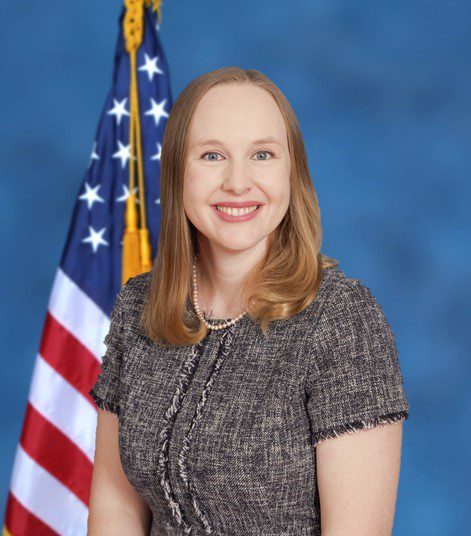
Holly Dittmar, MS, RD, CSR, CNSC Registered Dietitian Nutritionist
This is what you have been waiting for! We had so much interest in the renal disease webinar in February that we ran out of time for all the questions. Special thanks to Holly Dittmer for providing answers to questions asked in the webinar End-Stage Renal Disease: Balancing Labs and Food for Quality of Life. The recording is posted and 1.0 CPEU is offered for RDNs and NDTRS. You can access this recording at https://oneop.org/event/114653/ .
- What about the use of frozen pops regular or sugar-free as a source of fluids?
They do count towards daily fluid. They are cold so they may help quench thirst sooner. It is up to the client if they would like to include them in their fluid allotment.
- How do you think patients can eat plant-based high protein/phosphorus food sources like nuts and beans while taking into account the potassium in these foods?
The lowest potassium nuts are pecans, walnuts, and cashews. The recommended portion is 1 ounce. Cashew butter has less potassium than peanut butter or almond butter. One cup of beans can be soaked in six cups of water for twelve hours and then cooked for 30 minutes with fresh water to lower the potassium content. The lowest potassium beans are garbanzo beans, which are commonly used in hummus. Tofu is lower in potassium than soybeans. Soy yogurt is lower in potassium than dairy yogurt. The bioavailability of phosphorus is 20-40% and the phosphorus binders work best on natural food.
- Would you recommend taking all binders (if on multiple) at the same time after the first bite or spreading them out throughout the meal?
It depends on the client and their preference. The binders need to be taken as close to the meal as possible.
- Patients ask me if they can eat more/less calcium in foods to adjust their serum calcium up/down. Normally I tell them that dietary calcium would impact very little and we need to approach with calcimimetic and binder/supplement dosages. Would you agree?
Nephrologists typically resolve calcium abnormalities by adjusting phosphorus binders, Vitamin D analogs, and Calcimimetics. The KDOQI guideline 6.2.2 does state that dietary calcium may be adjusted. For hypocalcemia, you could aim for 800-1000 mg calcium/day. For hypercalcemia, you could limit calcium-enriched and fortified foods, choose foods <10% daily calcium per serving, and select foods stating not a significant source of calcium.
- Is vitamin K used for its role in reducing calcification in soft tissues?
Per the KDOQI Clinical Practice Guideline in Nutrition in CKD 2020, there is research ongoing in this area. I encourage you to read their detailed explanation of what is known thus far. Currently, the recommendation is to not provide Vitamin K supplementation with warfarin use. We currently do not supplement Vitamin K as it is not a part of the renal MVI. Fat-soluble vitamins are not removed through dialysis and may accumulate in the body.
- Can a patient with ESRD go to an outpatient dietitian for Diabetes MNT or does the Dialysis RD do MNT on DM and CKD?
It is up to the client. The dietitian covering dialysis can address both diabetes and renal concerns. All registered dietitians are able to provide general nutrition counseling. If the main concerns are renal (CKD or ESRD) and a Certified Specialist in Renal Nutrition (CSR) is available, they could see them. If the main concerns are diabetes and a Certified Diabetes Care and Education Specialist (CDCES) dietitian is available they could see them. Every site likely has a different way of triaging consults. A Veteran with well-controlled potassium and phosphorus, but experiencing episodes of both hypoglycemia and hyperglycemia with an insulin pump and a continuous glucose monitor could be seen by a CDCES colleague and then return to the CSR for renal specific recommendations.
- What about decaf coffee and tea and iron absorption?
It is the tannins in tea and coffee that inhibit non-heme iron absorption and not the caffeine. The tannin compounds bind with iron during digestion reducing their absorption.
- How is a renal multivitamin different than a regular one?
Renal multivitamins have a B vitamin focus and should be taken after dialysis. They contain 60-100 mg Vitamin C and some contain zinc. They are free of fat-soluble vitamins as these are not removed through dialysis and may accumulate in the body.
- What type of protein powders would be most suitable for dialysis patients?
The current VA contract uses whey protein powder. There are different dialysis shakes on the market using different protein sources: milk protein, soy protein, and pea protein. Per the KDOQI Clinical Practice Guideline in Nutrition in CKD 2020, there is insufficient evidence to recommend a particular protein type (plant vs animal) at this time.
- Do you recommend that protein range even for patients with obesity?
All recommendations are tailored and individualized based on comorbid conditions. They may need additional protein to help maintain lean body mass. Per KDOQI Clinical Practice Guideline in Nutrition in CKD 2020 because the body weight suggested (IBW, BMI, usual, current) depends on clinical judgment related to the patients’ health goals the specific weight formula used for prescription is personalized to the patient.
- How do vegetables decrease uremic toxins? By the fiber?
Yes, fiber helps to reduce uremic toxins. Also, constipation worsens the dysbiosis of gut microbiota and contributes to the uremic status.
- Did you say the anemia risk is due to erythremia?
No. With ESRD there is reduced production of the hormone erythropoietin by the kidneys resulting in the production of fewer red blood cells and less oxygen delivered to the tissues placing them at risk for anemia. There is a higher risk of iron deficiency anemia with dialysis due to blood retained in the dialysis machine and tubes (up to 2 g of iron per year) and frequent phlebotomies.














